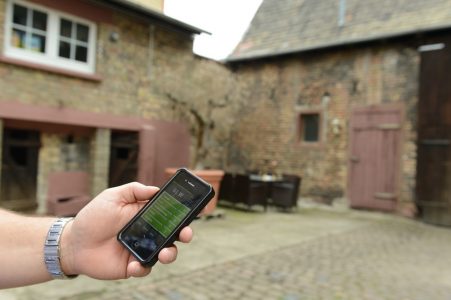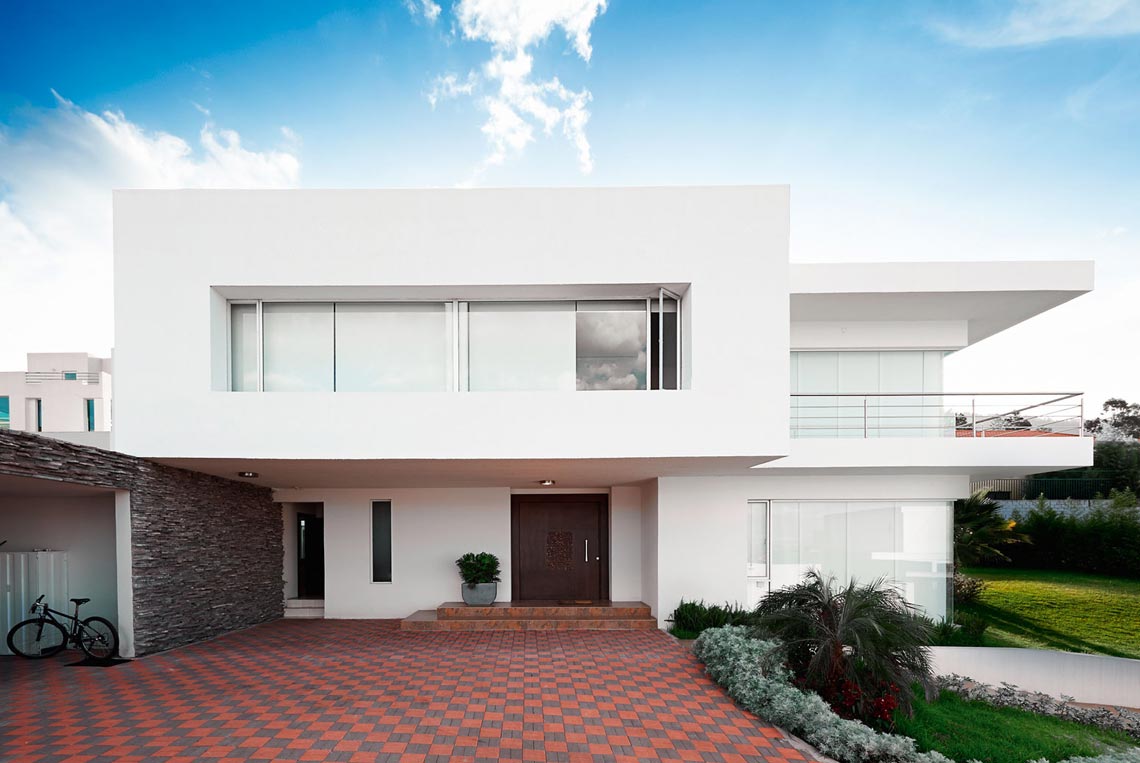Well coordinated teamwork on a smart farmstead
Issue 01-2016:
read all articles online
read as pdf
Modern smart home technology revitalizes a former urban farmstead in Mannheim by turning it into an intelligent single-family home. Developed by digitalSTROM, this technology transformed the historic building into a comfortable, energyefficient living space without requiring any renovations. The best part of all: Thanks to open interfaces, EnOcean technology was integrated into the digitalSTROM house.
A glimpse through the front gate gives passersby an idea of the special building that lies beyond. The farmstead evokes the charm of a bygone era right in the middle of Mannheim’s rectilinear cityscape. Like the house walls, the gate has a great many years under its belt and doesn’t always close properly in some kinds of weather. And yet the family dog can no longer slip out unnoticed.
A small solar-operated door contact wirelessly signals if the gate is not properly latched. A notification to this effect pops up on the homeowner’s smart phone. However, the contact sensor is only a small part of the intelligent network that lies behind the farmstead’s old walls.
Intelligence without renovations
digitalSTROM provides the historic building with a smart infrastructure, which was installed without any intervention into the physical structure of the house. The smart digitalSTROM terminals easily network a wide range of devices and electrical loads via the existing power line, so the solution is able to be retrofitted without any additional cables. “It would have been too costly for us to do a complete renovation with new wiring. Not to mention all the noise and dirt this would have caused. The farmhouse was completely modernized ten years ago, so the electrical installation was in good working order,” says homeowner Thomas Rudolph.
digitalSTROM now lets the residents control functions such as lighting atmosphere, shading and room temperature according to their needs. They can customize lots of individual scenarios to their specific preferences. Thereby, it makes their living space more comfortable, more secure and more energy-efficient. The seamless integration of wireless sensors and actuators turned out to be another benefit of the open system. “We can use the EnOcean-based wireless sensors in places where there isn’t any electrical wiring,” Rudolph adds.
The right properties
The IP-supported communication between all integrated components converges on the digitalSTROM server in the distribution cabinet. An additional gateway in the office translates the EnOcean wireless signals into IP. The products receive digitalSTROM properties the first time they connect to the network. For example, the wireless smoke detector is linked to the “fire” function in the system. When the detector sounds the alarm, the digitalSTROM smart home system automatically activates the appropriate scene, to which the devices can respond independently, due to the decentralized approach and standard behavior: The lights go on, the blinds are raised and the user receives a push notification. The scenes are programmed in a browser that runs on the network or an app. Customers can program these scenes themselves and do not require a specialist.
Enormous energy savings
digitalSTROM and EnOcean wireless sensors also work together as a well coordinated team when it comes to controlling the heating system. For this purpose, Valve actuators from Thermokon, mounted on the radiators, and energy harvesting wireless temperature sensors for individual room control are integrated into the smart home system. The temperature can thus be controlled in the individual rooms according to the current demand. For example, if the guestroom is unoccupied, the ambient temperature there and in the guest bathroom is kept at a constant 15 °C. In addition, digitalSTROM provides a central “Everything Off” switch. When a family member is the last person to leave the house, all it takes is a keypress to automatically switch the heating system to economy mode.
“Since we can’t cover the historic facade with new insulation, the heating control system is the number one way for us to save energy. And the effects are clear to see. Solely through the smart temperature controller we’ve cut energy costs by 400 euros per year”, explains Thomas Rudolph.
Open to new things
The digitalSTROM network offers another benefit. Once entered, the data can be used for different applications. The motion sensors are used both to automatically turn on night lighting and trigger an alarm as well as defined light scenes when the system is in security mode.
Thanks to the open interfaces of the digitalSTROM system, the future of the smart farmstead is secure. In the years to come, Thomas Rudolph wants the EnOcean-based wireless window handles to signal when windows or the patio door are open, so that the heat can be automatically turned down in the appropriate rooms during the winter. When the window is closed again, the temperature rises back to a comfortable level.

Embracing interoperability
The homeowner sums up: “I have a lot more ideas for additional functions. Thanks to digitalSTROM’s open interfaces, I’m able to add and integrate products and devices from various providers at any time. So I’m not tied to a self-contained system. This is important to me, and I’d be happy to offer this piece of advice to other homeowners. When choosing a system, you should definitely make sure that it can be added to later on without trouble. If the system provides sufficient support, owners can upgrade it later on by themselves without any specialized knowledge. Plug & play is key here. After all, our needs change over the course of our lives. The smart home should be able to keep pace with these changes.”
New articles in Smart Home
Top articles




